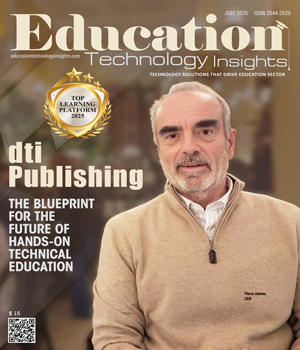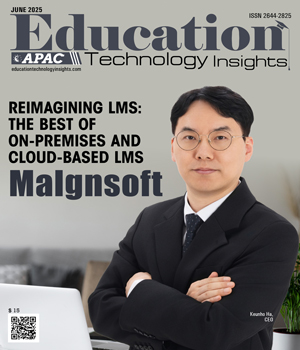THANK YOU FOR SUBSCRIBING
Be first to read the latest tech news, Industry Leader's Insights, and CIO interviews of medium and large enterprises exclusively from Education Technology Insights
Breaking Down Educational Silos with...a Trebuchet?
Dr. Joe Fullerton, Principal, Technical College High School Pickering Campus
“When are we ever going to have to use this?” is an all too familiar question that teachers and administrators hear from students. It is a question I heard many times when I was teaching in the classroom and one I have also heard as a high school administrator. Throughout my professional career, I have come to realize that this question has less to do with disliking math, or at least that is what I would like to believe as a former math teacher, than it does with our failure as an educational system to connect learning to new, digital generations.
As a young math teacher, my views on integrating a systemic approach to curriculum development and implementation stemmed from my work at a career and technical education center (CTC). As someone who was trained in a traditional K-12 educational model, career and technical education fundamentally challenged many of the assumptions I had about the best way to connect learning to real-life applications. For example, I quickly found that one of the best ways for my students to learn about the volume of a cylinder was to connect it with work that students in the Automotive Service program were doing on a Mustang. While my students struggled to see the importance of learning about the volume of a theoretical cylinder, rephrasing the lesson in terms of piston displacement, which requires an understanding of the volume of cylinders, increased engagement among my students by making a direct connection between what they were learning in math class with what they were learning in their lab.
As a former teacher, and now as a principal, I have learned that much of the integration between academics and real-life applications, in this case through career and technical programs, involves a common vocabulary. This vocabulary allows the students to make connections between a subject they are most interested in and the core academic subjects they are required to take. This becomes an opportunity for a student to connect what they are learning in math as not just a class, but as an essential element of a much larger system that allows them to pursue their passion, such as working with cars. It is in this connection, this association, that deep-learning occurs and school becomes exciting.
A project that I remember fondly from my days in the classroom revolved around a school-wide activity in which we built a trebuchet, and by trebuchet, I mean an actual, medieval-style siege engine. Each class and program in the school played a different part that, when looked at collectively, presented an opportunity for community learning. The Precision Machining students decided to build the trebuchet in collaboration with the math, science, history, English, Allied Health and Collision Repair classes.
The premise of the project was to help over 100 students learn about medieval siege machines and their importance from a wide variety of perspectives. Each class was given a specific part of the project that paired up their expertise, which was designed to utilize students’ interests to help increase their collective understanding of the topic. The math classes created and maintained a spreadsheet that measured the velocity of the different projectiles that were launched with the trebuchet. The Precision Machining program was in charge of engineering the trebuchet as well as making adjustments after each shot to make it more accurate. The science classes researched the different weaponry that was used and their advantages and disadvantages. The Allied Health program was responsible for researching the medical care that was available during a medieval siege to help measure the human impact of these events. The English class helped to collect and present all of the findings in a style, both artistically and linguistically, of the medieval period. Even though students were responsible for a particular part of this project, the nature of the work overlapped so that the barriers between classes were often not distinguishable as students worked together to achieve their goal.
Not only did the trebuchet shatter some of the mock targets we created, but these devices shattered barriers between academic and technical silos within our school. As a principal, I believe that the learning accomplished during the trebuchet project represented a moment, a spark, in which my students saw the beauty of life-long learning. At that moment, there was no math class, no English class and no Allied Heath class, there was just a group of students storming a castle of their imagining based on their research, hard work, collaboration and passion for the things that interested them. My hope is that, as educators, we continue to seek new ways to eliminate the silos that cause our students to ask, “When are we ever going to have to| use this?”
Read Also
The Indispensable Role of Emotional Intelligence in K-12 Technology Leadership
Reimagining Learning in a Digital World
Simplifying Online Program Tuition: Residency-Based Pricing in a Digital Age
Empowering the Future of Online Learning: A Holistic Vision for Transformational Education
Transforming Education Through Technology Leadership
Preparing for Generation Alpha in the Age of AI

I agree We use cookies on this website to enhance your user experience. By clicking any link on this page you are giving your consent for us to set cookies. More info























